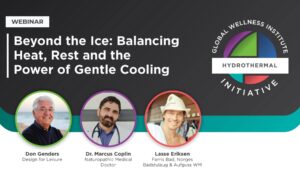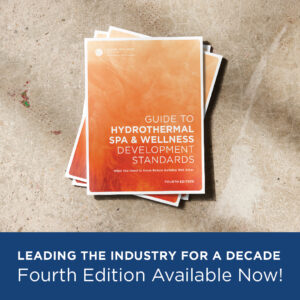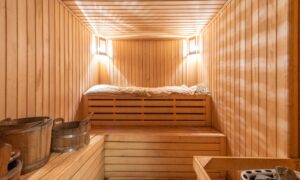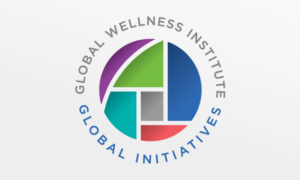Hydrothermal Initiative Resources
Beyond the Ice, Part 2: Exploring Cooling Rituals and Contrast Therapy
Beyond the Ice, Part 2: Exploring Cooling Rituals and Contrast Therapy July 1, 2025 | 11AM ET | Free Webinar After the success of our first session, we're diving deeper into the evolving world of cold therapy. While ice baths ... Read More

Beyond Ice Baths: What Comes Next in Cold Therapy? (Webinar Replay + Bonus Resources)
Beyond Ice Baths: What Comes Next in Cold Therapy? (Webinar Replay + Bonus Resources) Thank you to everyone who joined the Global Wellness Institute's Hydrothermal Initiative's live Zoom session, Beyond Ice Baths: What Comes Next in Cold Therapy? We had a fantastic conversation that explored the entire hydrothermal journey - including heat, cold, rest and ... Read More

Hydrothermal Initiative Trends for 2025
Hydrothermal Initiative 2025 Trends As global wellness priorities shift, the spa and hydrothermal industry is reimagining everything—from how we use water to how we define relaxation. The five trends shaping 2025 show a sector that’s becoming more sustainable, inclusive, socially ... Read More

Sauna Users are Happier – Study Shows
Sauna Users are Happier - Study Shows A new study from Sweden finds that people who use saunas are happier, sleep better, and have more energy. Dr. Hans Hägglund, a professor at the University of Uppsala (aka the "sauna doctor"), ... Read More

Introducing the New & Improved Guide to Hydrothermal Spa & Wellness Development Standards
Increased interest in personal and communal wellness, means that developers, architects, designers, and builders are exploring new ways to incorporate evidence-based hydrothermal wellness features, such as saunas and cold plunges, into virtually every residential or commercial project. In celebration of ... Read More

Does the Combination of Finnish Sauna Bathing and Other Lifestyle Factors Confer Additional Health Benefits?
A recently published paper from Mayo Clinic, authored by Seto K Kunutsor, MD, PhD and Jari A. Laukkanen, MD, PhD explores sauna bathing and its link to health benefits beyond its use for leisure and relaxation. The paper analyzes observational ... Read More

Hydro-Thermal Therapies are Essential for Building Health, Safety and Resilience in the Age of Pandemics
Hydro-Thermal Therapies are Essential for Building Health, Safety and Resilience in the Age of Pandemics Hydro-thermal therapies reduce the risk of chronic disease and boost the immune system’s ability to resist viral infections - An evidence based discussion paper. This ... Read More

COVID-19 Related Studies & Guidelines
Hydrothermal Initiative Resources - COVID-19 Related Studies & Guidelines Centers for Disease Control and Prevention: Considerations for Public Pools, Hot Tubs, and Water Playgrounds During COVID-19 Design for Leisure: COVID-19: Hygiene and Cleaning Tips for Hydrothermal Areas Dr. Marc Cohen: ... Read More

Related Studies/Reports/Published Articles
Hydrothermal Initiative Resources - Related Studies/Reports/Published Articles 2020 - Hydrotherapy proven to be both preventative and therapeutic health treatment By Spa Business 2017 Briefing Paper The briefing paper is a snapshot of this industry sector including valuable information on latest ... Read More

Hydrothermal Initiative Collaboration
Hydrothermal Initiative Collaboration Sauna Science Lab In this Hydrothermal Initiative Collaboration, leading medical researchers, scientists and sauna experts debated the role of sauna in public health and wellness post-COVID-19. Sauna experts Lasse Eriksen and Don Genders, chair of the GWI ... Read More
The Global Wellness Institute serves as an umbrella organization for numerous Initiatives, that are independently chaired and run. The resources, editorial, research and opinions presented by the Initiatives do not necessarily reflect the opinions of the Global Wellness Institute.























































